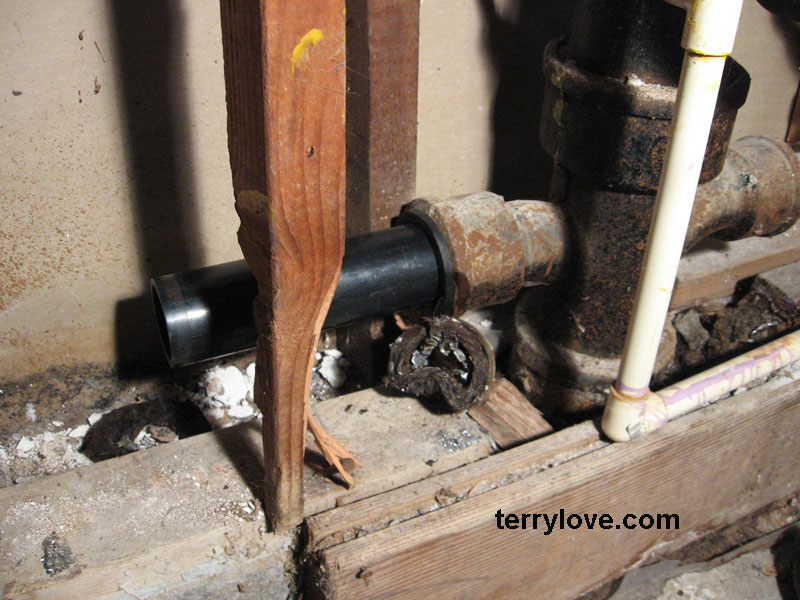xd2005
Member
- Messages
- 36
- Reaction score
- 0
- Points
- 6
Under my house, I recently noticed some puddling water. After some further research, I think I have nailed down the problem.
I believe my leak is occurring at the seam of a cast iron Y. Coming in the top of the Y is my bath/shower drain. This has all been replaced with plastic from the drain to near the Y. The other inlet is a galvanized drain that has since been abandoned. The pipe goes probably about 15' and then is capped. It seems that when draining the bath, the water backs up some into the abandoned pipe and is leaking at the joint between the Y and the abandoned galvanized drain line.
Why it was capped at the end, and not removed and plugged at the Y seems unusual to me. It also seems a little scary, as I would assume it is because they were unable to remove the pipe for some reason.
EDITED:
Below are a few pictures of the leak.
Thoughts? Solutions? Thanks!



I believe my leak is occurring at the seam of a cast iron Y. Coming in the top of the Y is my bath/shower drain. This has all been replaced with plastic from the drain to near the Y. The other inlet is a galvanized drain that has since been abandoned. The pipe goes probably about 15' and then is capped. It seems that when draining the bath, the water backs up some into the abandoned pipe and is leaking at the joint between the Y and the abandoned galvanized drain line.
Why it was capped at the end, and not removed and plugged at the Y seems unusual to me. It also seems a little scary, as I would assume it is because they were unable to remove the pipe for some reason.
EDITED:
Below are a few pictures of the leak.
Thoughts? Solutions? Thanks!



Last edited:


